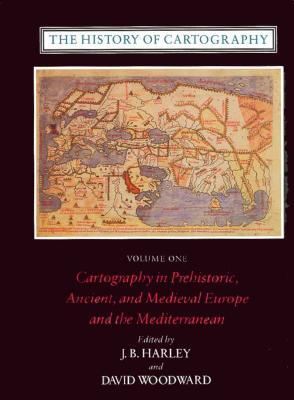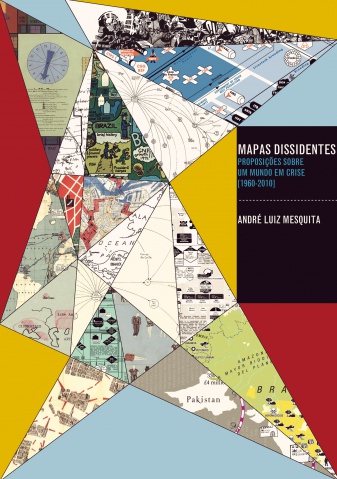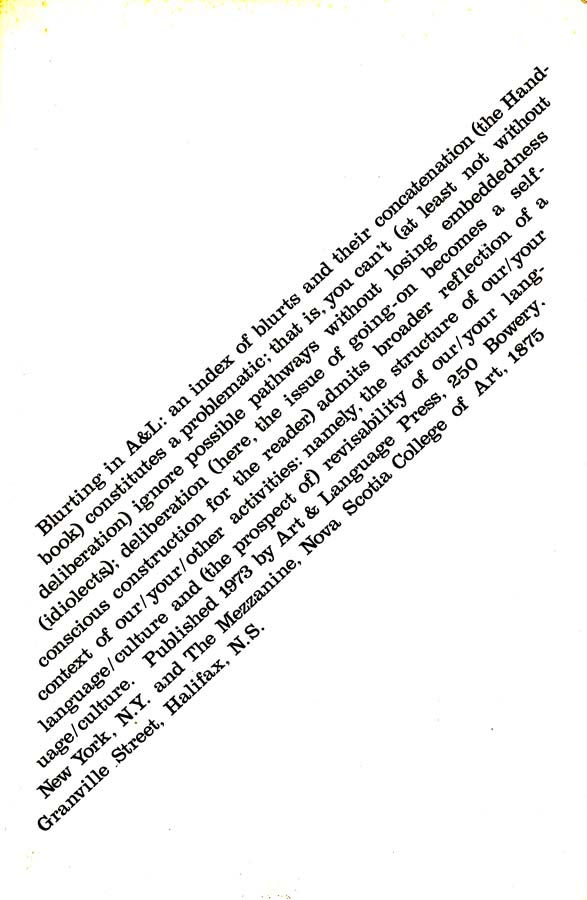J. B. Harley, David Woodward (eds.): The History of Cartography (1987–)
Filed under book | Tags: · cartography, data visualisation, history, mapping

The monumental History of Cartography is an unprecedented survey of the development of cartography both as a science and an art. This essential reference presents the enormous value of maps to societies worldwide and explores the many ways they have been used to depict the earth, sky, and cosmos from ancient times to the present. The series is both a work of reference (comprehensive in coverage and rich in bibliographies, illustrations and other reader aids) and of scholarly interpretation (authoritative, factually up-to-date, revisionist and espousing deliberately broad terms of reference).
Volume 1 (1987): Cartography in Prehistoric, Ancient, and Medieval Europe and the Mediterranean.
Volume 2, Book 1 (1992): Cartography in the Traditional Islamic and South Asian Societies.
Volume 2, Book 2 (1994): Cartography in the Traditional East and Southeast Asian Societies.
Volume 2, Book 3 (1998): Cartography in the Traditional African, American, Arctic, Australian, and Pacific Societies.
Volume 3 (2007): Cartography in the European Renaissance [In two books].
Volume 4 (forthcoming, edited by Matthew Edney and Mary S. Pedley): Cartography in the European Enlightenment.
Volume 5 (forthcoming, edited by Roger Kain): Cartography in the Nineteenth Century.
Volume 6 (forthcoming, edited by Mark Monmonier): Cartography in the Twentieth Century.
Publisher University of Chicago Press, 1987-
Open Access
c5000 pages
The History of Cartography Project
Download Volumes 1-3 (PDF chapters, from the publisher)
Comment (0)André Luiz Mesquita: Mapas dissidentes: proposições sobre um mundo em crise, 1960-2010 (2013) [BR-Portuguese]
Filed under thesis | Tags: · activism, art history, cartography, data visualisation, mapping

“Esta tese é uma investigação sobre um conjunto de mapas e diagramas produzidos por artistas e ativistas entre as décadas de 1960 e 2010, a partir de diferentes contextos de transformação social, política e econômica em momentos de crise, de conflito e de formas potenciais de resistência. Através de documentos como catálogos, manifestos, artigos, fotografias, documentários, obras de arte, reproduções de mapas e entrevistas, a pesquisa realiza uma análise sobre esse conjunto de mapeamentos desenvolvidos por três gerações de artistas.
No primeiro capítulo, este trabalho examina os jogos e mapas realizados nos anos 1960 e 1970 pelo sueco-brasileiro Öyvind Fahlström (1928-1976) durante as tensões geopolíticas da Guerra Fria (1947-1991) e as mudanças estruturais e organizacionais do capitalismo global na década de 1970. No segundo capítulo, a tese discute a obra do norte-americano Mark Lombardi (1951- 2000), artista que, durante a década de 1990, procurou mapear com suas estruturas narrativas redes internacionais de poder e transações financeiras obscuras envolvendo bancos, governos e elites dominantes da sociedade neoliberal. O terceiro capítulo trata das práticas de contracartografia conduzidas entre os anos 1990 e 2010 pelos coletivos de arte ativista Bureau dÉtudes (França), Counter-Cartographies Collective (Estados Unidos) e Iconoclasistas (Argentina).
Com base nas articulações entre arte contemporânea, ativismo político e cartografia crítica, a tese considera que os mapeamentos realizados por esses artistas-ativistas trazem experiências importantes de produção de conhecimento e contribuem para a visualização das relações de poder no mundo contemporâneo, opondo-se também aos mapas supostamente imparciais, objetivos e naturalizantes do mundo guiados por interesses corporativos, militares e governamentais.”
Ph.D. thesis
Faculdade de Filosofia, Letras e Ciências Humanas, Universidade de São Paulo
284 pages
PDF (53 MB)
Comment (0)Blurting in A & L [Art & Language] (1973/2002) [English/German]
Filed under book | Tags: · ambiguity, anthropology, art, art criticism, art system, autonomy, conceptual art, experience, ideology, knowledge, language, learning, mapping, philosophy, theory, translation, work

Blurting in A & L is a printed booklet whose content is a dictionary with blurts or ‘annotations’. The annotations were written by the members of Art & Language Ian Burn, Michael Corris, Preston Heller, Joseph Kosuth, Andrew Menard, Mel Ramsden and Terry Smith.
“The project began as a collaboration among Art & Language members in New York City. In weekly meetings from January to July 1973, eight participants produced written statements called ‘annotations’ or ‘blurts’ on topics ranging from the ordinary to the abstruse (art, learning, ambiguity, heuristics, stimulus-meaning). In each subsequent meeting the group would return with new statements that ‘went on’ from the last week’s annotations. In the end, through the efforts of Michael Corris and Mel Ramsden the comments were compiled in a handbook. In all, some 400 odd entries were edited and grouped according to subheadings with vague quasi-logical connectors linking them to one another.
Since the connections among the entries were many-to-many, readers could choose their own course through the material, which blurred the boundary between passive reader and active participant. This was a key ideology of Art & Language – the idea that membership was permeable or, as one participant put it, ‘a function of participation’.” (from a commentary by Chris Gilbert, Mute, 2002)
An online version installed by ZKM, Karlsruhe, in 2002 includes articles which contextualize Blurting in A & L within the activities of the group in the 1970s. Present and former members of Art & Language (Michael Baldwin, Michael Corris, Philip Pilkington, Mel Ramsden) summarize and reflect on their activities. Thomas Dreher embeds Blurting in A & L within the proceedings of the discourse of Art & Language.
Blurting in A&L: An Index of Blurts and Their Concatenation (the Handbook) Constitutes a Problematic; That Is, You Can’t (at Least Not Without Deliberation) Ignore Possible Pathways Without Losing Embeddedness (Ideolects); Deliberation (Here, the Issue of Going-On Becomes a Self-Conscious Construction for the Reader) Admits Broader Reflection of a Context of Our/Your/Other Activities: Namely, the Structure of Our/Your Language/Culture and (the Prospect of) Revisability of Our/Your Language/Culture
Edited by Michael Corris, Mel Ramsden
Publisher Art & Language Press, New York, and The Mezzanine, Nova Scotia College of Art, Halifax, 1973
92 pages
Online version and accompanying publication edited by Thomas Dreher, 2002.
Announcement of the hypertext version (Syndicate, 2002)
Blurting in A & L (1973, HTML)
Blurting in A & L Online (English, 2002, HTML)
Blurting in A & L Online (German, 2002, HTML)

